LIVESTOCK FARMING AT THE TENUTA DI PAGANICO
Of the Tenuta’s 1,500 hectares, a good 1,100 are woodlands, used by our animals as veritable stables. Free-range farming based on grazing, the fundamental objective for all of us, and the organic certification, obtained more than 15 years ago, constitute for us the foundations of a whole work aimed at animal welfare and low environmental impact.
On the Tenuta, Cinta Senese breed pigs and the Maremmana breed as beef cattle are raised. Regarding the care of the animals, we primarily turn to homeopathy, a non-conventional medicine practice that derives from the attention and observation of the individual animals’ needs and requirements.
The breeding of bovine reproducers is entirely free-range; therefore, the cows with the bull live freely in sections of the company’s woodland area, which occupies 1100 hectares, feeding on pasture, shrubs, and wild fruits without any use of stables. We supplement their diet with organically produced hay from the farm. [To better understand: 1 hectare = 10,000 square meters = approximately one football field. Try to imagine 1100 football fields!] Calves are born in the wild and stay with their mothers until they are six months old. After years of experimentation aimed at improving animal welfare and the quality of the entire production process, the current company objective is to make the entire breeding cycle extensive: all the calves intended for fattening have been moved from free housing to pasture-based free-range farming, where the animal’s diet is mainly based on grazing, both herbaceous and shrubby. The calves’ diet, in addition to hay and pasture, is supplemented with meal made from barley, oats, beans, corn, and triticale. The feed is grown and ground within the company on over 400 hectares of arable land using organic methods. The breeding of Cinta Senese breed pigs includes reproducers and fattening pigs. The animals are fed in meadows and pastures with the addition of meal produced by us.

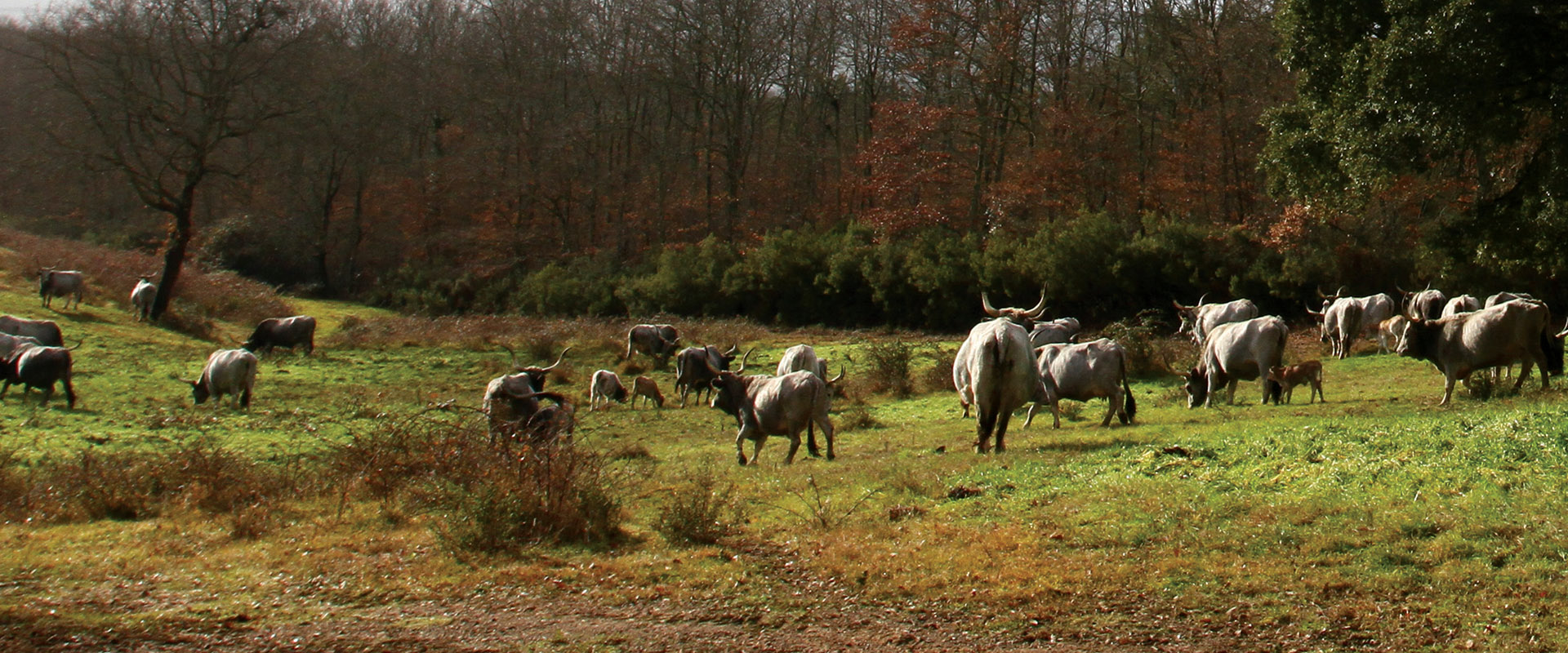
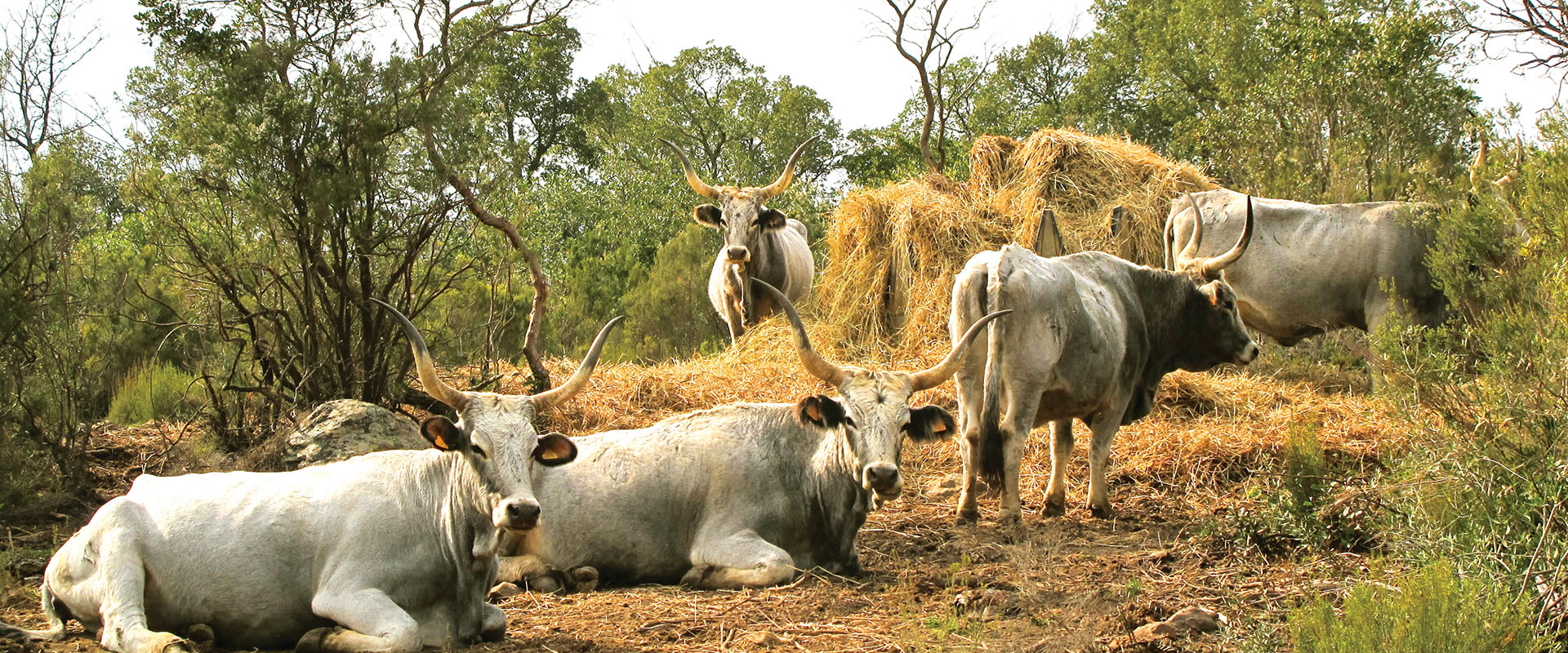


MAREMMANA BREED CATTLE
Territory
Tuscan Maremma, province of Grosseto, a hilly area characterized by woodlands predominantly of oak species managed as coppice and high forest, Mediterranean scrub, pastures, and pine forests.
For the feeding of Maremmana breed subjects, the presence of certain woody species, both trees and shrubs, such as downy oak, English oak, holm oak, cork oak, manna ash, strawberry tree, heather, and broom, typical of this area, is fundamental.
Breed Description
A rustic breed with a great aptitude for grazing and life even in the woods. The Maremmana breed can be considered native to our country and has been present here since prehistoric times.
It is characterized by a broad chest and a strong and solid bone structure, with a prevalence of the forequarters over the hindquarters.
But the fundamental characteristic that makes these cattle the symbol of the Maremma landscape are precisely the large horns, crescent-shaped in males and lyre-shaped in females, also useful for opening passages in the most inaccessible scrub and for bending plants down to lower the foliage to ground level, thus allowing others to feed on them. Collaboration, at least among conspecifics, is everything!
Type of Farming
Farming is conducted in a free-range manner according to the tradition of these areas: cows graze with the bull in fenced areas of about 40 hectares that enclose pastures – preferred in spring and summer – and woods, real places of shelter and a source of food in autumn and winter. The animals are always managed in groups by the livestock manager until the moment of weaning, that is, the weaning of the calves, born strictly from natural mating, at the age of six or seven months.
The subsequent phases of fattening and finishing, i.e., the last months before slaughter, were managed in confined enclosures with feeding based on hay and cereal flours of company production, while recently a profound change is being aimed at: growth and finishing – the last phase of the animal’s life before slaughter – take place in pastures and woods, where feeding is supplemented, if necessary, with hay and flours. Common in the case of the Maremmana breed is the use of free-range farming for reproducers, but rare and innovative is the technique concerning the extensive farming of the calves themselves.
MAREMMANA BEEF FROM THE TENUTA DI PAGANICO
Meat Quality: The meat of the Maremmana breed raised with this farming philosophy is intense red in color and very flavorful. It has an excellent water retention capacity, with a consequent low loss of water during cooking.
Rich in unsaturated and especially polyunsaturated fatty acids – including the ω-3 series – and low in saturated fatty acids and cholesterol, it may even be qualitatively better than Chianina beef, until now considered the absolute best from a dietary-nutritional point of view.
The farming system, the age of the animals, the native breed, and the specific diet are the elements that define and reflect the quality of the meat.
The Tenuta di Paganico is also one of the first Maremma farms to draw up and sign the “Charter of Values” of the Slow Food Presidium “Razza Maremmana,” with the aim of promoting and safeguarding this breed and its native territory.
Typical Uses: It offers excellent meat for quick-cooking dishes like the classic Florentine steak, but the forequarter of the animal is also highly prized, providing excellent boiled meats, braised dishes, stews, and pot roasts, as well as traditional preparations.
CINTA SENESE BREED PIGS
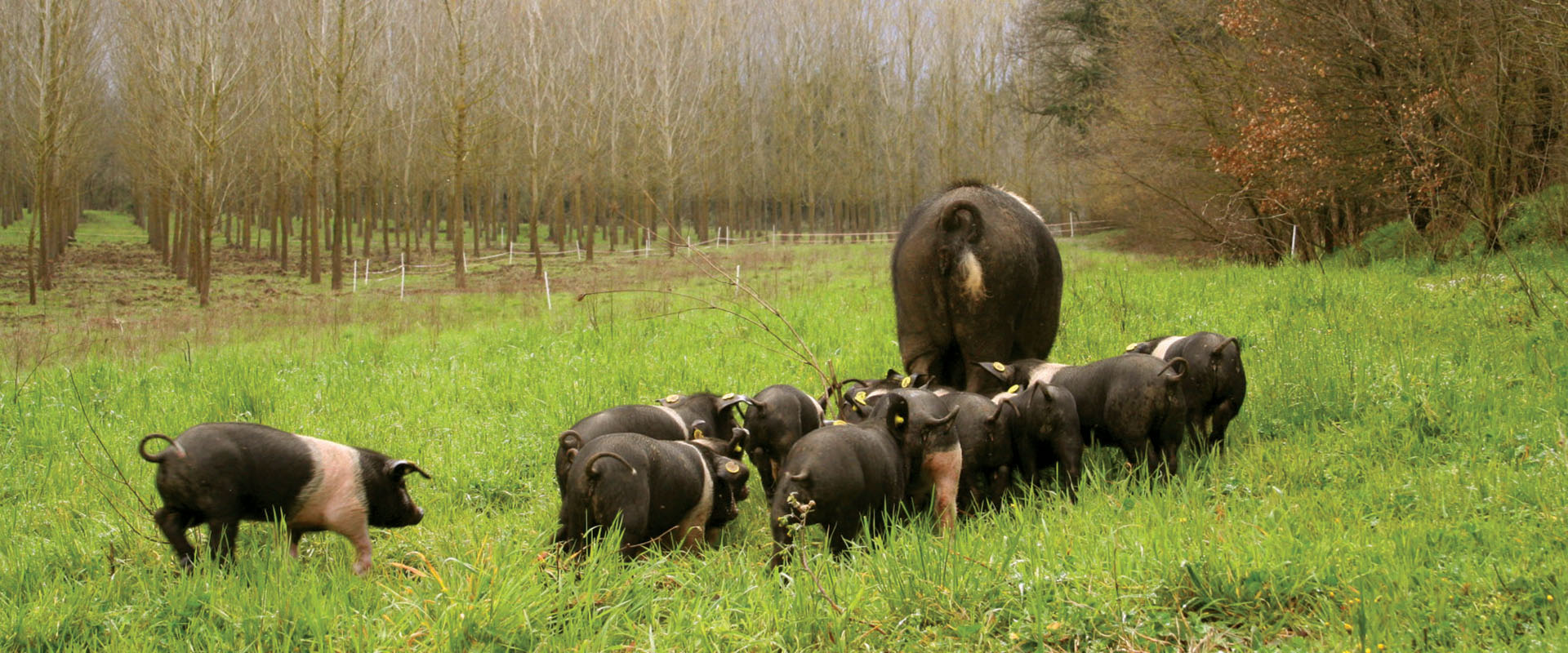
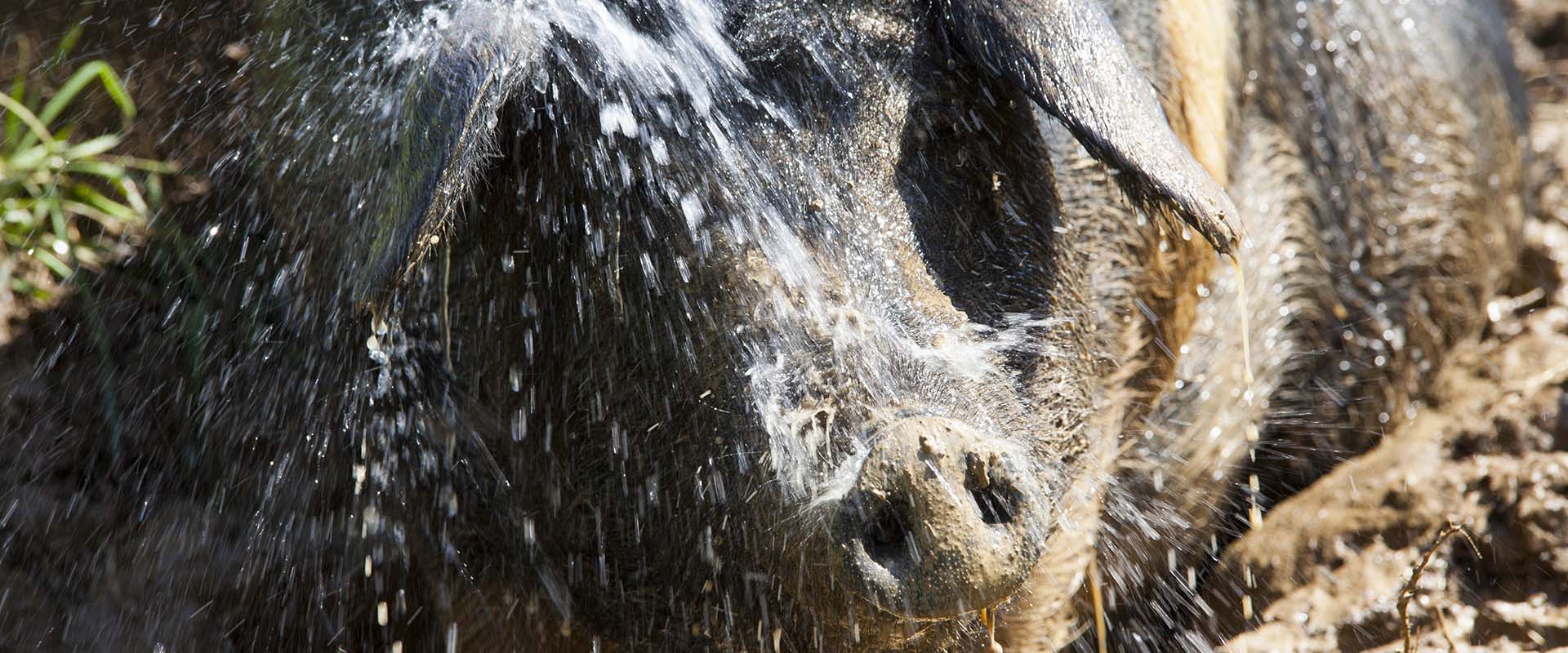
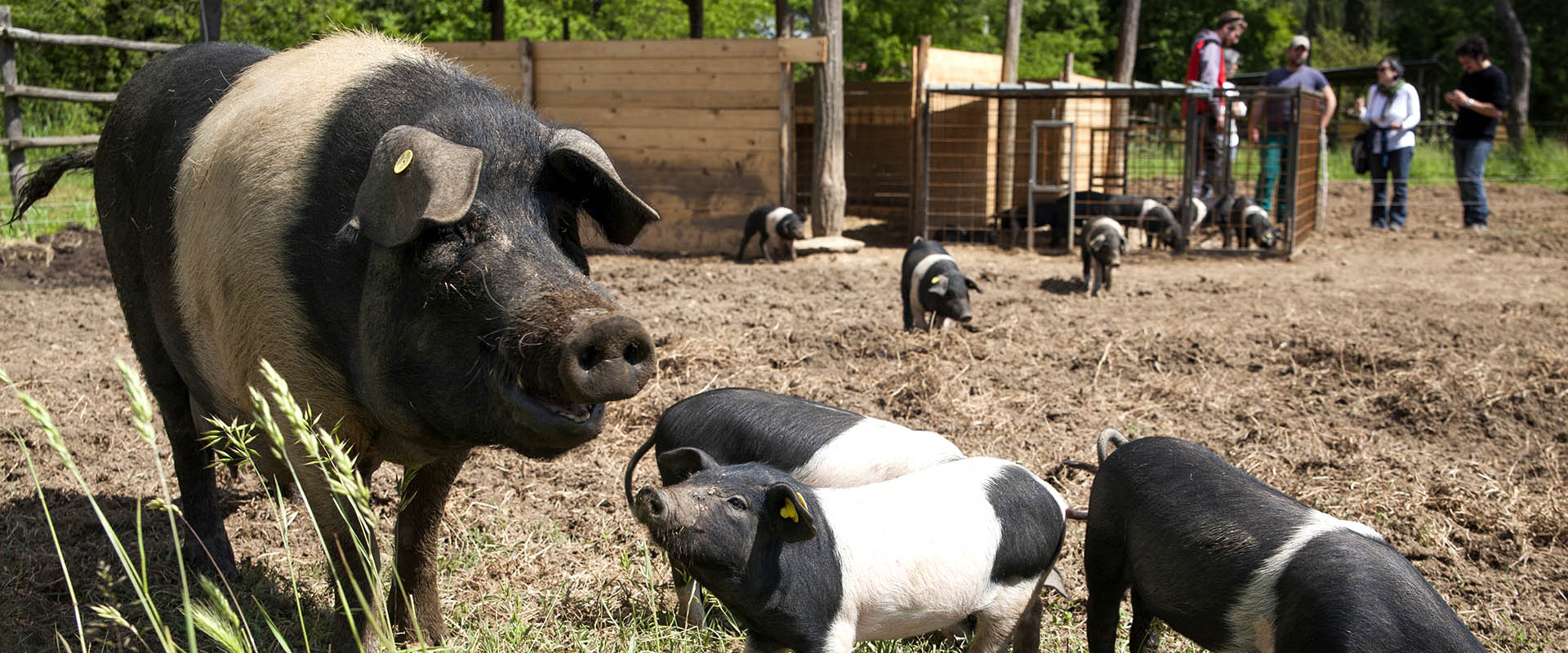


Territory and Type of Farming
The Cinta Senese breed is raised by the Tenuta di Paganico in a semi-wild state in woodland areas, arable land, and specially prepared pastures. The diet is supplemented, depending on the season, with meal made from barley, soft wheat, oats, sorghum, corn, beans, and peas, but also with acorns collected in the Tenuta’s woods and chestnuts from nearby Monte Amiata.
Breed Description Its morphology is typical of a grazing animal: long head with well-developed jaws, small ears carried forward and moderately drooping, robust limbs, cylindrical trunk not excessively long with a slight preponderance for the hindquarters, well-attached and not curly tail. But the characteristic that makes it unique is its black coat with a white band that encircles the chest and extends to the lower limbs. The average weight of adult breeding animals is 180/200 kg, while the slaughter weight is 120/140 kg at about 18 months.
Meat Characteristics
Cinta Senese meat is bright red in color with an intramuscular fat content of 3%, an optimal level to provide flavor and tastiness to the meat. The fat has a lower percentage of saturated fatty acids compared to traditional pigs (“pink” breeds such as Large White or Landrace) and therefore contains more oxidizable fats (usable for energy purposes by the body) that are deposited in adipose tissues in smaller quantities.
Another quality of Cinta Senese is the low level of cholesterol in the fat contained in its meat.
Typical Uses: Both fresh meat and cured meats represent the pure essence of Tuscan tradition: accompanied by classic unsalted Tuscan bread and paired with both tannic and full-bodied red wines, they constitute the quintessential Maremma snack. The Tenuta di Paganico offers fresh meat and cured meats, trying to blend traditional recipes with modern processing techniques: the sausages are produced, in fact, with the sole addition of aromatic herbs, guaranteeing the absolute absence of preservatives, such as nitrites and nitrates, colorings, or any other chemical additive.
